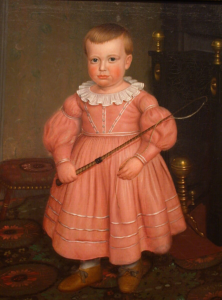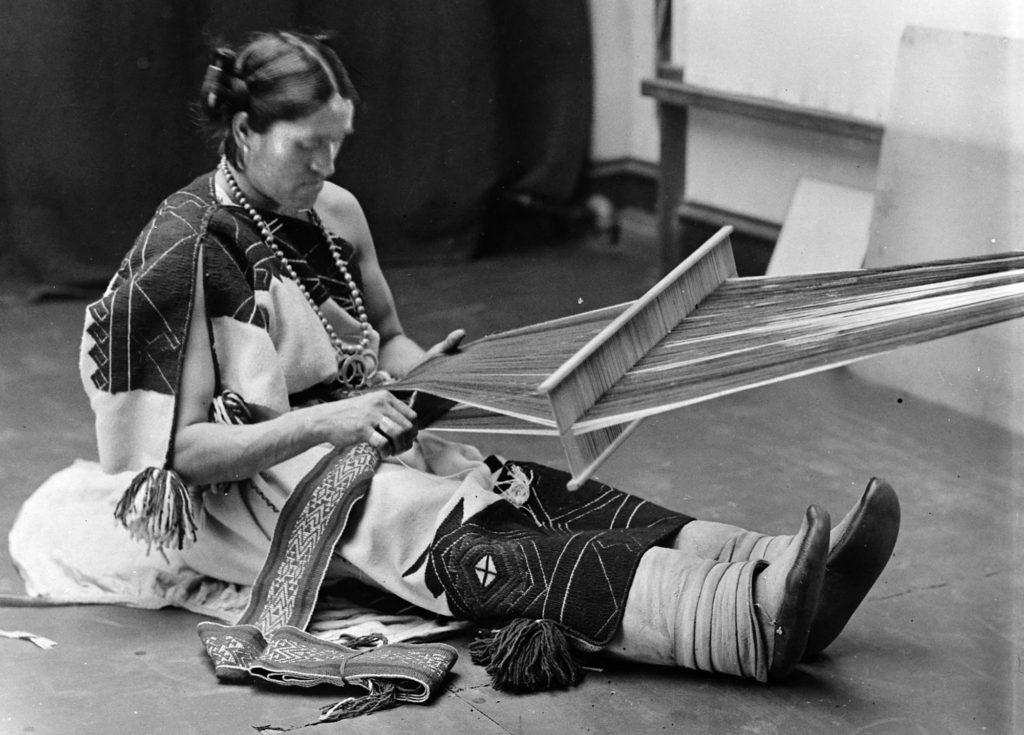By Nikos Jordan
In a colonially dictated world, we have become accustomed to believing in fairytales that are so deeply interwoven into the fabric of reality that they are imagined as absolute and insurmountable truths. Yet when interrogated through a decolonial lens, this ideological fabric comes undone. What lives behind it is something raw, something deep, something Indigenous, something true. Extracting the veil of myth suffocating predominant conceptions of gender is a needed liberatory act for all people. Indeed, understanding we all are implicated in the constrictive threads of predominant gender ideology is the only way we can begin to move towards collective liberation.
The colonial engine informing and steering the contemporary globalized world thrives—indeed, is predicated—on false binaries. Civilization and Nature. White and Black. Man and woman. And within each of these and more: good and bad. The reduction of the complexity inherent to Nature and beautifully undefinable by humanity into simplistic binaries is one of the driving forces and prerequisites of our contemporary socioeconomic system. To interrogate and deconstruct these binaries and their intersections with one another is thus a needed liberatory act. Yet how do we even begin this journey when the perceived “biological truth” of binary gender is one of the most powerful cultural forces alive today, seeping into every facet of our existence and animating ignorance and hatred?

It is, of course, necessary to first recognize that gender is not the same as sex. Gender refers to characteristics of people that are socially constructed. This includes norms, behaviors, and roles associated with being a certain gender as well as relationships with others. Gender is a construct that differs across societies and time. Gender as it is predominantly conceived of today is the invention of what we call “masculinity” and “femininity” and its application to every dimension of existence, filtered through a narrow conception of biology and anatomy. It is the fairytale that certain drinks and foods are somehow “masculine” or “feminine,” that certain pieces of fabric we adorn our bodies with are somehow solely meant for “women” or “men” (though the system does, for example, maintain its paradoxes through such garments as kilts), that it is one of the laws of Nature that blue is masculine and pink is feminine (though before the 20th century in the West, the opposite was considered true). Gender is, ultimately, what we make of it; it has no objective grounding in reality. This can be both restrictive (as experienced in colonial societies) or liberatory.
Common rallying calls for those who advocate for the maintenance and widespread indoctrination of binary gender ideology are insidious. Seemingly simple questions such as: “What is a woman? What is a man?” are loaded. To answer, a woman is what we make it, as is a man. The very substance of gender is construction, of which we are the architects, enforcers, and subjects. This complexity maintains its power even amongst some of those who identify as feminists.
Yet, was it not (or should it not be?) the goal of feminism to ensure that the body one is born into does not dictate the ability to explore one’s interests, pursue one’s desired path through life, and inhabit oneself fully as a complex and nuanced person?
Even for those opposed to non-binary understandings of gender, it is critical to note that there has never been one singular definition of a woman or a man. An intersectional lens enables us to see deeper truths within systems of gender. For example, while it may commonly be posited that women are viewed as docile and meek as opposed to men, an intersectional reading would reveal to us that, in Western spaces, white women are often perceived as such yet Black women, on the other hand, can be perceived as aggressive or angry through racist tropes. Even those interested in maintaining binary beliefs around gender already perceive—whether they recognize it or not—a multitude of genders, whether racially imagined or derivative of hierarchical conceptions of masculinity, such as with the invention of “alphas,” “betas,” and so on. Simply put, there has never been just one “woman” and one “man.” Our approach to gender should thus lie in what is liberatory rather than what is oppressive. However, while some may admit that gender is social construction, they hold fast to their notions of sex. Sex in their mythology is binary, fixed, and “biological.” It is, in other words, inescapable and undebatable.

Sex is, nevertheless, not a binary. Intersex people are born with physical or biological sex characteristics that do not fit the conventional definitions of “male” or “female.” According to some definitions of intersex, intersex people are around as common globally as people with green eyes or people with red hair. The common misconception that even though gender might be socially constructed, sex is inextricably based in “biology” has successfully pervaded even allegedly progressive circles. However, how we conceive of and categorize sex—even beyond a recognition of intersex individuals—is dependent on historical, cultural, and social decisions, not mere “biology.” Leading gender scholar Dr. Anne Fausto-Sterling suggests we investigate how genetic variability interacts with environmental stimuli to produce anatomical differences that lead us, at least partially, to invent our conceptions of sex. For example, research has shown that cultural norms specifying girls wear dresses but not boys manufacture alleged sex differences in certain types of motor skills. Dr. Fausto-Sterling thus argues that gender is more like nitrogen, oxygen, or carbon dioxide, one of the predominant atmospheric elements that impacts the body and consciousness.
It is also often assumed that “male” and “female” brains are fundamentally different and that these allegedly hardwired distinctions dictate identity, preference, and behavior. Yet there is no comprehensive, replicable scientific evidence to support the notion that brains are inherently sex-differentiated. The persistence of this myth is rooted in biological determinism—a belief that attributes behavioral differences solely to anatomy, which conveniently upholds the status quo rather than challenging the societal structures that manufacture these behaviors. The dominant theory of brain organization suggests that early exposure to hormones creates divergent “male” and “female” brains, but scientists such as Dr. Jordan-Young dismantle this assumption, positing that “brain organization theory” is nothing but a continuation of longstanding myths about supposedly antagonistic “male” and “female” essences.
These inconsistencies invite us to investigate their origin. Upon critical inspection, predominant gender ideology is inextricable from colonialism’s patriarchal racial project, pitting “facts” on gender and sex against reality. In the sprawling aftermath of the onset of global European colonialism, the so-called Enlightenment, and the subsequent Industrial Revolution, leading Enlightenment ideologues instituted a mechanistic, anthropocentric, white supremacist, patriarchal conception of science that weaponized anatomy as an organizational tool. In their ideology, “biological differences” were weaponized to maintain narrow substrates of power and domination. These ideologies are the ones that steer the predominant conception of gender today. Given this legacy, what could a decolonial approach to gender mean? One does not need to imagine—we already have our answers in a breadth of both pre-colonial and contemporary Indigenous societies.
Throughout all of human (and more-than-human) history, gender has been entirely dependent on place, culture, and more. When one expands one’s awareness of history and Nature, it is clear that, in reality, there have never been just men and women. “Across Indigenous North America, some people lived their lives as neither men nor women. Some were seen as combining – even transcending – masculine and feminine characteristics. They performed important social roles, held knowledge, led ceremonies, reared children, married and lived in same‐sex relationships” (Canadian Museum for Human Rights). For the Zuni Native American tribe, the Ihamana “play a key role in society as mediators, priests, and artists, and perform both traditional women’s work (pottery and crafts) as well as traditional men’s work (hunting)” (PBS Independent Lens). The winkte in the Native American Lakota tribe “assume key roles in rituals” and serve “as the keeper of the tribe’s oral traditions” (PBS Independent Lens).

Beyond Turtle Island, the possibilities for gender beyond the binary still abound. “Long before Cook’s arrival in Hawaii, a multiple- gender tradition existed among the Kanaka Maoli indigenous society. The mahu could be biological males or females inhabiting a gender role somewhere between or encompassing both the masculine and feminine. Their social role is sacred as educators and promulgators of ancient traditions and rituals” (PBS Independent Lens). For the Indigenous Yoruba peoples of West Africa, the very ideas of “men” and “women” did not exist until the imposition of European colonial authority. While acknowledging reproductive roles, gender was not invented to establish social hierarchy until colonial policies and practices were implemented (Dr. Oyèrónké Oyêwùmí). The realities of the Yoruba and other peoples across the globe reveal that, contrary to conventional belief, there is no fixed, universal idea of a “man” and “woman”—these are distinctions that are culturally invented, imposed, and often exacerbated over time.
The central question that emerges through this recognition of reality is how did what was once considered sacred become what is largely hunted and hated today? Grappling with this staggering and violent contemporary reality requires us to untangle the colonially derived and imposed ideologies strangling our collective liberation. Yet while it is essential that we ground our beings historically, it is the unison of the historical with the personal that catalyzes the possibility for life beyond the binary. In contrast to popular belief, issues of non-binary gender do not just impact those who are non-binary themselves; these issues are essential for all of us and our collective ability to thrive. While gender non-conforming people continually remind those who are willing to listen of the truth that lies in life beyond binaries, it is those still laboring under the delusion of fairy tales that have hemmed and foreclosed their own existences that we must turn to.
Behind many men lives a little boy who could not wear pink, who could not have long hair, who could not play with dolls, who could not wear dresses, who could not like princesses, who could not spend time with girls, who could not speak with melody, who could not cross their legs, who could not express hurt except through aggression, who could not be a person. Behind many women lives a little girl who could not be loud, who could not climb trees, who could not play football, who could not be strong, who could not be independent, who could not be messy, who could not show anger, who could not take up space, who could not be a person. We are done with the could nots because we recognize that we are people, not in spite of but because of all our seemingly disparate elements that together make us whole. We are decolonially devoted to this truth of life that is too often quelled and denied. We rise in opposition to fairytales of truth, embracing the diversity and honesty of life in living, breathing action.
